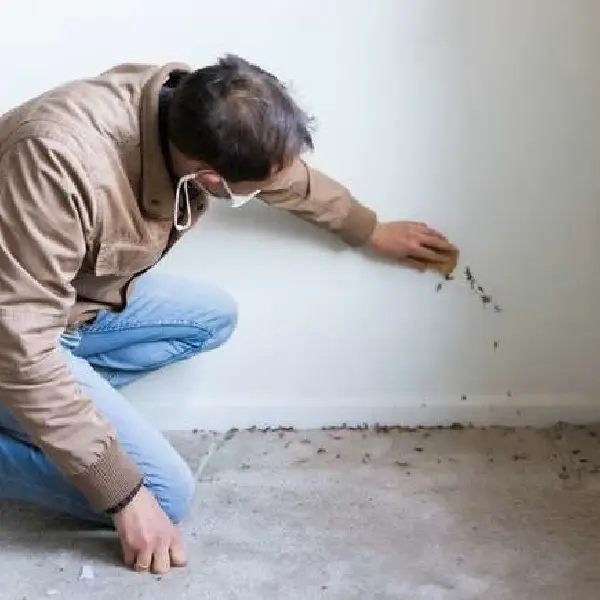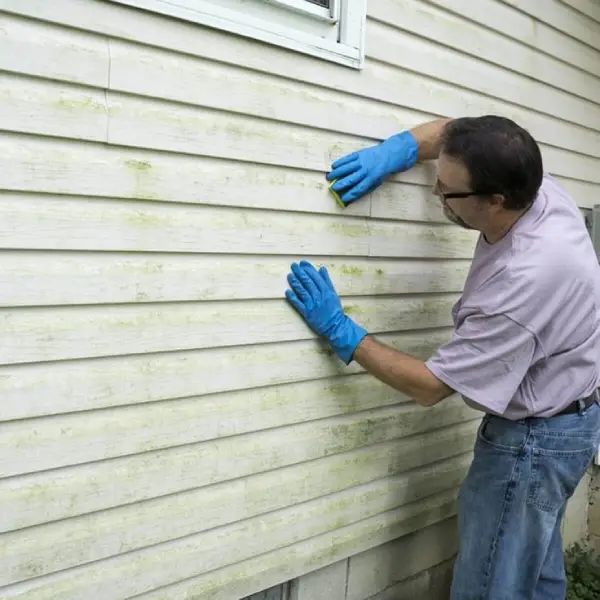Lead Inspections: why and how inspectors do it?

Whether you're purchasing an old property or want to ensure that you and your family are protected from the dangers of toxic lead exposure, lead paint home inspection can assist.
Lead, particularly lead-based paint, is prevalent in homes built before 1978. It is a hazardous substance that can cause major health problems, with small children, the elderly, and immunocompromised people being the most vulnerable.
So, whether you own an older house or want to acquire one, it is critical to test for lead-based paint and other sources of lead, such as lead-contaminated water and soil.
You should also test for lead if you want to renovate or remodel your house, as they might produce lead dust and endanger your family.
This article illustrates the explanation of a lead paint inspection, why should we do it, and the typical cost of lead inspections depending on different factors.
What is a Lead Paint Home Inspection?
Lead inspections entail a surface-by-surface examination of your house to evaluate the presence of lead-based paint and identify potential sources of exposure.

image sourced from here
What is Lead Risk Assessment?
This entails studying the site to establish not only the existence and sources of lead, but also the degree, kind, and precise locations of lead hazards.
Outside of paint, they include dirt and dust. Assessors will also make recommendations on how to solve the problem, assisting in the development of an effective method to control it.
Lead Inspection vs. Lead Risk Assessment
An inspection is a surface-by-surface assessment to detect the presence of lead-based paint in a house or child-occupied institution, as well as its location.
Only qualified inspectors or risk assessors can lawfully do inspections. Lead-based paint checks identify the presence of lead-based paint.
It is especially useful for verifying the presence of lead-based paint before buying, renting, or remodeling a property, as well as identifying possible sources of lead exposure at any time.
A risk assessment is an on-site inquiry that identifies the existence, kind, severity, and location of lead-based paint hazards (including lead hazards in paint, dust, and soil) and recommends management measures.
Only qualified risk assessors are legally allowed to conduct risk assessments. Lead-based paint risk evaluations are especially useful in identifying sources of existing exposure and developing potential remedies.
You may also do a combination inspection and risk assessment. With either of these alternatives, the risk assessor or inspector will give you a written report outlining their findings.
The Importance of Lead Testing
Lead exposure is harmful, particularly for children under the age of six. Children can inadvertently consume lead from surfaces they can reach, such as doors, windows, stairs, porches, railings, and banisters.
Deteriorating lead-based paint can also emit dust, which can be breathed. Lead exposure can cause lasting harm to a child's mental and physical development.
The following are the well-documented harmful consequences of lead on children:
- Brain and nerve system injury
- Slowed growth and development
- Hearing and speech issues
- Learning and behavior issues
For more information about the harmful consequences of lead, click here.
When Should We Inspect the House for Lead Paint?
Generally, in the situations mentioned below, you should get your house to be inspected for lead-based paints:
- Your child has been diagnosed with lead toxicity. The most prevalent cause of lead exposure in the house is decaying lead-based paint and the dust that it produces.
- You reside in a home that was constructed before 1978 and has or will have small children.
- You are planning to rebuild or do anything that may disturb lead-based paint or produce lead-based paint dust and chips, which can harm you and your family.
- You're either renting or buying a property. When purchasing a house, federal law authorizes the buyer to undertake tests to identify whether lead-based paint or lead-based paint dangers exist. This is especially vital if you have (or want to have) small children at home.

image sourced from here
How Does the Lead Paint Inspection Work?
If lead paint is discovered in your unit, contact your landlord immediately in writing that you want the lead dangers removed.
To protect yourself in the event that the landlord attempts to evict you, you should provide your own written notice to the landlord (in addition to the inspector's notification).
The law forbids a landlord from retaliating against you for exercising your right to safeguard your kid from lead poisoning.
You should immediately notify your local Lead Poisoning Prevention Program, Board of Health, or CLPPP of the inspection results.

image sourced from here
How Long Does a Lead Inspection Take?
Home lead inspections typically take two to four hours to conduct, depending on the size of your home and the amount of samples collected.
Maintenance of the lead-painted surfaces
It is critical to properly maintain the lead-painted surfaces in your house. Lead-based paint in excellent condition is typically safe. If your home was constructed before 1978:
- Check your home's paint on a regular basis for chipping, peeling, or degrading. Repair tiny sections (less than six square feet) of damaged paint as quickly as possible, without extensive sanding. If you must sand, sand only the necessary area, soak it beforehand, and properly clean up.
- Regularly inspect any painted places that rub together or receive a lot of wear, such as windows, doors, and stairways, for indications of degradation.
- Check for paint chips or dust on a regular basis; if you find any, carefully remove them with a moist paper towel and put them in the trash before wiping the surface with a new wet paper towel.
- At least once a week, wipe clean flat surfaces such as window sills with a moist cloth or paper towel.
- Mop smooth floors (with a moist mop) once a week to control dust.
How Much Does the Lead Paint Inspection Cost?
The normal range for a lead paint inspection is $350 to $750 in the US, but it still depends on your property:
By Property Size
Lead paint inspection fees differ by property size owing to the breadth of the examination, which rises with larger properties.
This may mean paying $200 for a little home or more than $1000 for a large one.
Larger houses require a more thorough inspection of painted surfaces, which takes more time and effort on the part of the inspector, thus lead-based paint inspection charges rise for larger homes.
By Location
Lead paint examination charges vary by region, but in big cities, they can range from $300 to $800. This is due to variations in local economic conditions, market demand, and cost of living.
High-cost localities frequently have higher inspection fees to cover greater operational costs and demand for specialized services.
Regulations and compliance requirements vary by location, which can impact the complexity and expense of inspections.
By Method
The cost of lead paint examination varies depending on the method used owing to changes in complexity, accuracy, and time requirements.
This may entail paying $150 for a visual examination and $800 for a risk assessment, which is a thorough investigation of your home.
The most basic technique of testing for lead paint is a visual inspection, which involves looking for apparent indicators on painted surfaces.
A professional will attempt to detect lead paint based on common indicators such as chipping, fracture, or odor.
Paint sampling entails collecting samples from diverse surfaces for laboratory examination to precisely identify lead concentration. X-ray Fluorescence (XRF) examination uses specialist equipment to detect lead levels in paint.
The normal range for a lead paint inspection is $350 to $750 in the US, but it still depends on your property:
Who Pays for Lead-Based Paint Inspection?
After signing the contract, you have ten days to engage a certified lead specialist to test the premises for lead paint. However, the buyer (not the seller) is responsible for scheduling and paying for the inspection.
If the lead inspector discovers any lead paint or lead paint dangers, you, the buyer, have the option to terminate or renegotiate the contract without penalty.
Some homeowners opt to forego this entitlement, ignorant that the price of future lead paint removal or abatement may be a significant, unanticipated expense.
Even if you don't want to leave your ideal house, you may be able to use the results of a lead inspection to negotiate a price reduction or credit for a paint allowance.

image sourced from here
FAQs
What is a lead paint inspection?
A lead paint inspection is a detailed study and assessment of a building or structure to detect the presence of lead-based paint.
Should I test my house for lead paint?
If your home was constructed before 1978 and you see cracking or peeling paint, a lead paint examination is suggested. A lead paint inspection provides you with reliable information regarding the existence, location, and quality of lead-based paint in your house.
How Much Does a Lead Paint Inspection Cost?
Depending on the property size, location, and the method used, it costs between $200 to $1000.
Can I Do a Home Lead Inspection by Myself?
Yes, but hiring a trained lead inspector or assessor for home inspection for lead paint not only protects your family's safety but also the accuracy of the results when determining the appropriate measures.
Are Sellers Required to Disclose Whether the Home Contains Lead Paint?
Yes and No. If a seller knows there is lead paint in the property, they must disclose this information to the buyer.
Can I Just Paint Over the Lead-Based Paint?
No, this is a frequent myth. In most circumstances, just adding a fresh layer of paint to lead-containing surfaces is insufficient to eradicate the risk.
Conclusion
A lead-based paint inspection is especially crucial if your house was built before 1978 since lead-based paint was widely used at that time.
If you do not know whether your house contains lead-based paint, you must have it inspected ASAP, because it can be so harmful, especially for children and pregnant women.
- In this post:
- What is a Lead Paint Home Inspection?
- The Importance of Lead Testing
- When Should We Inspect the House for Lead Paint?
- How Does the Lead Paint Inspection Work?
- How Long Does a Lead Inspection Take?
- Maintenance of the lead-painted surfaces
- How Much Does the Lead Paint Inspection Cost?
- Who Pays for Lead-Based Paint Inspection?
- FAQs
- Conclusion



